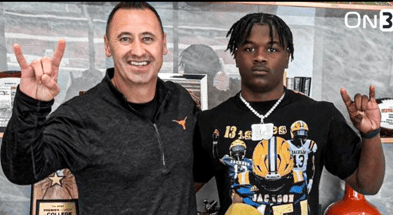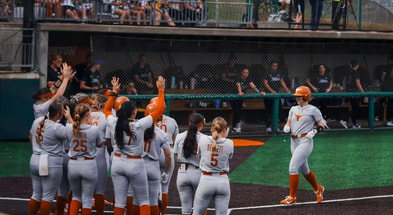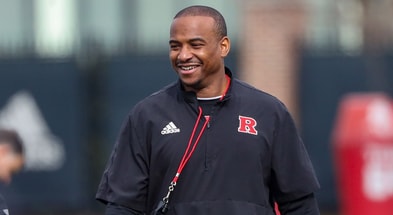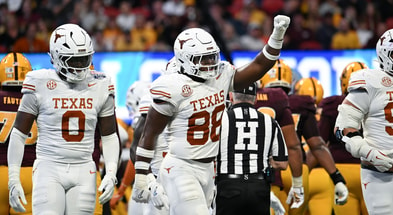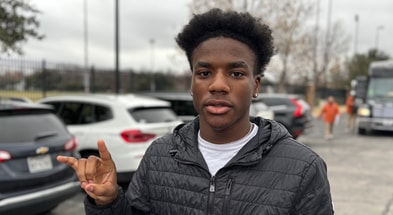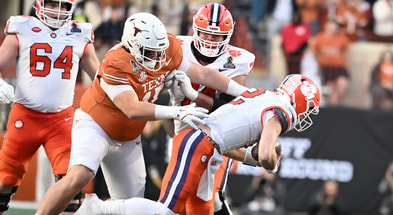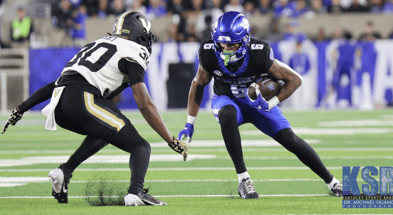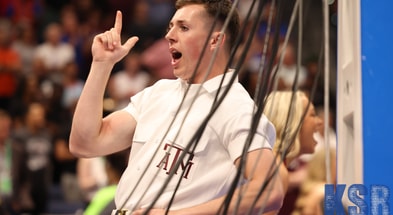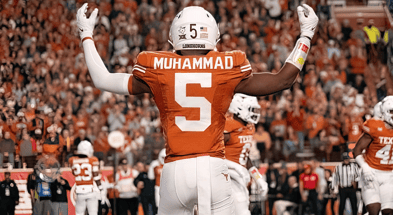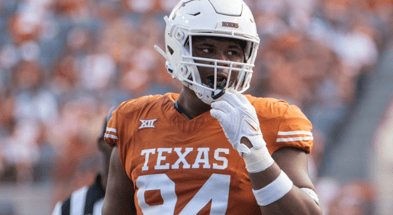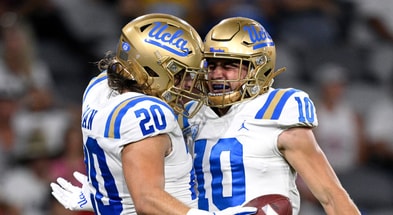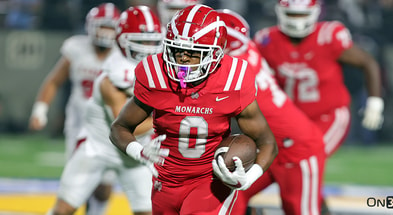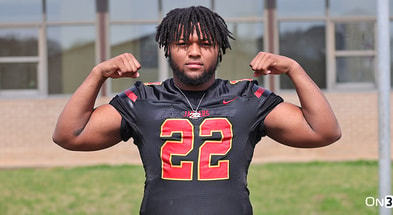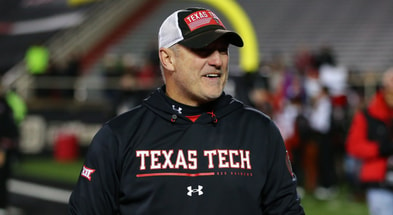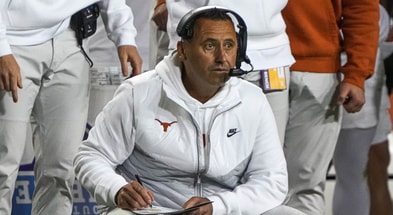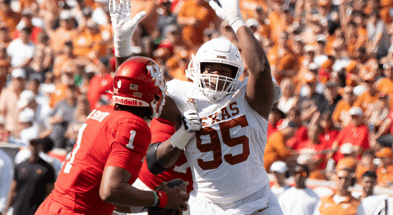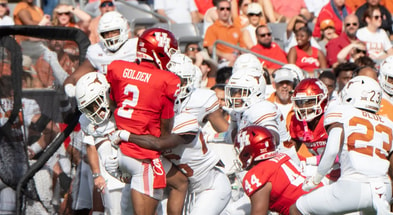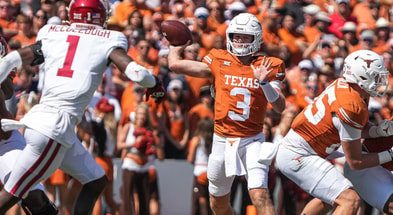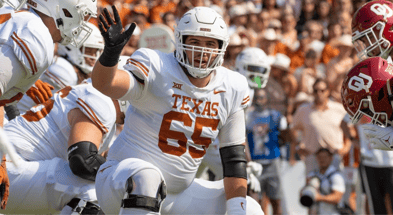The 2021 Big 12 space force rankings: Island cornerbacks

In the last piece we broke down the crucial offensive piece, the deep threat receiver, who I think is one of the most underrated player types in the game of football. If you read different coverage in the NFL these days, you are starting to see more and more recognition of this underlying fact in football. Tyreek Hill’s impact on games is massive, bigger than most any other player on the field, because of how much he stretches the defense’s structure. Derrick Henry is a monstrous human who is difficult to stop, but Tyreek Hill can appear just about anywhere on the field from play to play and find the goal line in a second’s notice.
The extent to which you can cover up these big impact receivers with a single guy, a brilliant man cornerback, then you can avoid that stretch on the rest of your defense. It should be noted though that this mostly only matters on standard downs. Why play man coverage on a top deep threat on a passing down? Just play a safety over the top of him. But on a run down if you can get away with using the safety in the run game, or just having him divide his attention some, you’ve gained a big advantage against an offense which probably isn’t accustomed to facing teams without the advantage they normally get from their receiver.
Here’s how the 2021 Big 12 looks in terms of fielding cornerbacks who can help their defenses avoid getting stretched past the breaking point by top receivers.
No. 1: TCU, Noah Daniels/Tre’vius Hodges-Tomlinson
Yes, the Frogs are no. 1 again, this is why I’ve been really high on them as a dark horse. This won’t be the last time they’re near the top of the 2021 space force rankings, either.
It actually starts with Daniels for them and not the more well known and hyped up Tre’vius Hodges-Tomlinson. Here’s why, check out how they line up, THT is no. 1 and Daniels is no. 21.
Both cornerbacks are potentially on their own down the sideline, the safeties have a checklist of concerns and many of them center around what the inside receiver is doing as well as the run game. This is the nature of quarters coverage. Noah Daniels is lined up to the short side of the field in both instances, while THT is lined up to the wide side of the field.
THT may more commonly find himself without help inside on the hash than Daniels because of the wider spaces and the higher prevalence of slot receivers lining up inside of him, but he also has all that space to help him. The ball has a longer way to travel so he has more time to recover and adjust. Many college offenses don’t even test that wider space and there certainly aren’t many teams who will “check fade” against the wide side cornerback in man. As you can see above, obviously Iowa State was one of the few and then only in the red zone.
THT is 5-foot-9, 177 pounds so while he’s lightning quick he has some size limitations if a team could pinpoint the ball on a vertical throw. Daniels has similar athleticism at 6-foot-0, 194 pounds so he’s the more essential piece to the puzzle. If he’s injured, again, the backup is probably C.J. Caesar who’s 5-foot-11, 165 pounds and played there in 2020 while THT remained fixed to the wide side. The Frogs take a step back without Daniels, but they still get a lot from being able to play man coverage outside to the wider side with THT. As I’ve written, a big question for TCU in 2021 is whether Patterson will adjust his schemes at all to help the nickel avoid isolation, he’s not as worried about either of these two getting left exposed in space.
No. 2: Texas, Josh Thompson/D’Shawn Jamison
The Longhorns are employing a new defensive scheme again this season so the dynamics here are a bit different. Chris Ash had them running a 4-3 press-quarters defense last year closely akin to the TCU schemes, new coordinator Pete Kwiatkowski is bringing a zone-matching system with a very different quirk.
In Texas’ two main coverages, match 3 (cover 3 with matching rules, think Saban) and “vision quarters,” (think a soft 2-read) involve the cornerbacks feeling routes while keeping eyes on the quarterback. So there will be an emphasis on keeping receivers in front of them while staying positioned to break on throws by the quarterback. It sounds like a sort of safe, bend don’t break philosophy and it sort of is, but asking guys to match routes with eyes on the quarterback is asking an awful lot in terms of coordination, discipline, and athleticism.
This is what Washington was playing and Jimmy Lake taught it very well, they had eight defensive backs drafted during the PK/Lake era (2013-2020). Texas will be playing it with Josh Thompson (6-foot-0, 194 pounds) and D’Shawn Jamison (5-foot-10, 190 pounds) who both started in 2020. Thompson will play left cornerback, which is technically your top guy. Jamison has a real knack for breaking on routes, he pick 6’d Casey Thompson playing quarters in the spring game, and is a smart pick for postseason All-B12 selection because he’s liable to put up numbers in this system. Kitan Crawford is next in line, a 5-foot-11, 198 pound former track star (10.6 100m) who may be the most promising corner on the roster. It’s even possible they’ll slide Jamison or Thompson inside to nickel (smart money on Thompson) to make room for Crawford.
So Texas will put a fair amount on their cornerbacks this season and have a lot of experienced and highly athletic (these guys all run 4.5 or better) players to plug in. I think the distance in quality between TCU and Texas here is minimal and really non-existent should Daniels struggle with injuries again. The styles are very different though, Texas will mostly catch routes while TCU is looking to press and disrupt from the outset. However, the boundary cornerback can get some press-man assignments (if he’s up for it) in match 3. If one of these two is up for it, the defense will be very formidable.
No. 3: K-State, Julius Brents
Julius Brents is an interesting new figure in the 2021’s Big 12. He played at Iowa in 2020, only getting a single start against Purdue and then transferring for the chance at more playing time with the Wildcats. Iowa has an incredible knack for finding and developing good cornerbacks, but they also have a pretty simple system. The majority of their snaps are spent playing cover 6, that’s quarters to the field and cover 2 on the boundary. So Brents played some of each of those and then mixed in a little man and cover 3 as well, he was at his best playing MOD (man on demand) or press coverage.
At 6-foot-2 and now 203 pounds (180 or so at Iowa), he’s a bigger guy but his straight line speed is plenty good. He can turn and run or stay on top of guys, change of direction is iffier but in K-State’s match 3 schemes he’ll mostly just be turning and running or hanging out over the top. He looked solid against Purdue last year but K-State has been raving about him in their camp and the Hawkeyes were certainly surprised and sad to see him go, so a jump in improvement may be forthcoming.
The Wildcats also return last year’s starters, Ekow Boye-Doe (6-foot-0, 165 pounds) and Justin Gardner (6-foot-2, 191 pounds). Both of those guys were really solid last year so my guess is they’ll play Gardner and Brents at right and left cornerback and move Boye-Doe inside to nickel as they did with A.J. Parker the year prior. There’s also some word they have a second-year Floridian defensive back named Aamaris Brown who could take over at nickel. Between Brents and Gardner they have good length and athleticism outside to challenge routes up and down the tree so watch out for the Wildcats.
No. 4: Oklahoma, D.J. Graham/Woodi Washington
Graham is the heir to Tre Brown, in my estimation. Woodi Washington was good in 2020 but they didn’t use him the same way, when he was at boundary cornerback they’d play him in cover 2 or bail him deeper and support him underneath with a safety. Washington is a very good zone corner but he’s not locking people down and certainly won’t be left on an island too often.
Graham is the new left cornerback and we got flashes of what it’ll look like in 2021 a year ago. These two started against Florida and the Sooners played a lot more match 3 coverage, as they’d done against Iowa State in the Big 12 final as well. They’d mix in some cover 2 and press-man underneath, but they were mostly playing press-bail.
It’s pretty dissimilar from where OU has been in recent years, which has included cover 1 and press-quarters, but they aren’t playing short, 4.4 cornerbacks anymore. Washington is 5-foot-11, 192 pounds and Graham is 5-foot-11, 195. They have more length and physicality but less recovery speed. In their cover 2 (palms) schemes the corners challenge routes underneath and leave receivers going vertical for the safeties, in match 3 they bail and play over the top. In either event, they don’t have to tightly contest a route from start to finish.
I’m expecting the Sooners to rely more on disguise and safe zone coverage this year, which is harder after losing Brendan Radley-Hiles in the nickel who knew how to show and play a million different looks. If their corners are generally trapping underneath or bailing deep then they’ll hope to avoid giving up anything big while leaning on the defensive line and linebackers to beat teams up front. If Washington and Graham improve significantly and are able to play more press-man that’ll open up possibilities for the Sooners but with their strengths up front, I don’t really see them taking as many chances outside in 2021.
No. 5: Kansas, Karon Prunty
Prunty was introduced to the league last year as a freshman and really held up quite well. The Sooners went after him in the red zone at least twice and came up empty, he’s a long corner at 6-foot-1, 189 pounds who can play some press man coverage and keep in phase with receivers. I was surprised by how often the Jayhawks left him on an island (not full time, but some) and they didn’t really suffer for it.
Now he has a ways to go to become a complete player, I caught him making a business decision near the goal line against Rhamondre Stevenson, but he’s a much better man coverage corner than you might expect from Kansas. They’ve quietly had a number of solid defensive backs over the years, they’ve just been so terrible overall it didn’t really matter. I think the new staff will build around Prunty quite a bit in 2021.
No. 6: Baylor, Kalon Barnes/Raleigh Texada
Baylor plays quarters like the TCU Frogs (corners don’t have help over the top) but they are often less aggressive with their technique, particularly with their current roster. Raleigh Texada cannot play press-quarters, Oklahoma State spotted him mixing it in a few times and immediately said “check, fade” and burned him twice with Dillon Stoner.
Wallace was out this game and Stoner had eight catches for 254 yards and three touchdowns in his stead.
Kalon Barnes is a more athletic option than Texada and I had him pegged for this role before the season, but he was still inexperienced last year AND played with a cast on his hand much of the season. Here he is trying to man up Quentin Johnston…
Top 10
- 1New
Ja Morant gun gestures
NBA announces punishment
- 2
Will Wade contract
NC State salary revealed
- 3
Pryce Sandfort
Iowa transfer commits to Nebraska
- 4Hot
Flau'jae Johnson
Makes decision on WNBA Draft
- 5Trending
Lamar Jackson
Dale Earnhardt Jr. legal battle
Get the On3 Top 10 to your inbox every morning
By clicking "Subscribe to Newsletter", I agree to On3's Privacy Notice, Terms, and use of my personal information described therein.
Not terrible, but QJ has him on his hip and is a big guy with long arms, plus it’s a well placed ball. Barnes is the better hope here for Baylor, especially with another year to develop in this system under the new staff and without a cast on his hand. If they can get a leap from him which vaults them up to fourth or so on this list, they’ll be very good on defense.
No. 7: West Virginia, Nicktroy Fortune
After playing more man coverage in 2019, in 2020 Fortune moved around for West Virginia and played some cover 2 both as the man over the top in the boundary or underneath in the flat. He didn’t have a particularly big impact, with only a pair of break-ups and a single interception on the season.
West Virginia playing increasing amounts of zone coverage on the back end is good for their emulation of the Iowa State formula, but they will want to be able to mix in more man coverage on third downs. Fortune is their most experienced man here as fellow corner Dreshun Miller and nickel Tykee Smith both transferred out. Jackie Matthews is the other presumptive starting corner, a JUCO who played sparingly in 2020, and they added FCS transfer Charles Woods (originally from Dallas).
Woods had a pretty big year in the FCS so he may be one to watch for this season. Overall though, expect a lot of zone coverage much like in 2020 and the Mountaineers will hope to be as effective up the middle despite losing Darius Stills and Tony Fields.
No. 8: Oklahoma State, Christian Holmes/Jarrick Bernard
I think the outlook here is a little bit bleak for the Cowboys but I’ve been very wrong before, as recently as last year when I didn’t foresee Ro Williams’ massive season. However, this time things seem a little more clear.
Before 2020 Williams was always a solid man corner who didn’t spend consistent time in that alignment or on top receivers. He was just honing his craft and waiting for the opportunity, as it turns out.
Christian Holmes was put in Williams’ spot a few times last year and couldn’t hold up. If OSU wants to keep playing some man coverage outside at left cornerback in their various schemes, Holmes is going to be targeted and it may go poorly for them. Jarrick Bernard is the other corner, a converted safety who played well in 2020 and broke up seven passes. Bernard has a great feel for zone and can reliably stay over the top of receivers, but he’s not a press-man corner. Holmes has been given the press-man assignment a number of times, he just wasn’t up for it.
Next in line the ‘Pokes have sophomore Korie Black and sophomore Jabbar Muhammad, neither of whom have the sort of elite recovery speed you want to see from press-corners. Holmes ran a 4.53 in high school and is probably their fastest outside corner, then they have some great athletes inside at safety in Tanner McCalister and Thomas Harper over the slot. You can probably count OSU among the teams who need to disguise coverages and zone things up outside to help their corners out, and Jim Knowles is apparently saying as much publicly.
As I keep noting, Oklahoma State successfully installing a base dime defense which makes use of Tre Sterling and Kolby Harvell-Peel as hybrid linebackers is the key to playing the same caliber of defense that salvaged their 2020 season.
No. 9: Texas Tech, Malik Dunlap/Demarcus Fields
Malik Dunlap is a transfer addition to the Texas Tech fold, like about a third of the roster overall, and joined from North Carolina State where he played extensively in 2020. Dunlap is a really interesting cat, listed at 6-foot-3 and 215 pounds with size and power evident on the field. NC State would have him shadow bigger receivers and just pop them off the line of scrimmage and try to get into their routes with the right timing while dealing with his initial jam.
There’d be a major risk of him getting blown by against a fast receiver with some skill off the line but if you put him on guys like Erik Ezukanma who are counting on using their physicality to help get into the routes, those guys are going to have some issues. NC State would have him turn and run with people at times…I think that’s fine so long as you’re willing to take some DPI flags and can keep him matched on slower receivers.
Elsewhere the Raiders return Demarcus Fields, who was their left cornerback in 2020. Fields had a tough job, because the Raiders played a 3-4 defense which necessarily put the corners on islands regularly and they’d have him play up on receivers a lot rather than with a cushion. He had 10 pass break-ups but he also got torched a lot. Back into the grinder he goes for 2021.
No. 10: Iowa State, Anthony Johnson
The Cyclones just don’t play much man coverage, and when they do there’s a lot of help or a lot of pressure. Anthony Johnson is their boundary corner and he plays over the top a fair amount, or underneath in cover 2 where he’s an underneath defender.
At 6-foot-0, 200 pounds (uh, listed. I have some doubts), he’s a stout player who’s ability to close and tackle from depth is key to his deployment in the scheme. They like to get the boundary safety involved in the run game some but when they do they’ll just concede some space underneath in the boundary, have the safety cover it on his way to the run game, similar to what Oklahoma was doing when they sent in the youngsters in 2020.
If you can isolate Johnson in space, they’ll just hope you don’t throw it underneath him all day for steady gains. There isn’t really much man coverage on the roster. However, they don’t particularly need it within their scheme. When they pressure he’ll just play off, they’ll mix in trap 2 zone blitzes, or he’ll get help over the top.
The top six teams listed here are the only ones I see as having any realistic chance of leaning on a cornerback who can cover 1-on-1 well enough to build the defense around and of those six it’s really the top three who you can bank on doing so. The more proven formula in this league for most teams is to be good enough up front to avoid being really good on the back end. Doing that requires being able to rush the passer in groups of three and four so we’ll hit the edge defenders next.
Cover photo by Tim Warner/Getty Images

